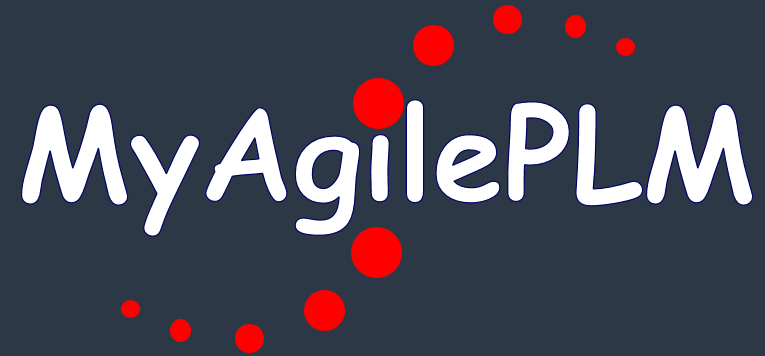
The digital thread is a concept that has been preached by many in the manufacturing industry for years. The idea is that through the use of technology, businesses can connect all aspects of product development, manufacturing, operations, and maintenance from early design to delivery. If you’re in the PLM business, you can see a lot of similarities with the idea of a single source of truth expanding into the broader scope of data and processes.
Why Digital Threads?
By doing so, companies create a “digital thread” that allows them to support and optimize their processes. However, while the potential benefits of the digital thread are clear, its implementation has proved to be challenging. For one thing, it requires companies to be open with each other and share data across different departments and systems. This openness can be difficult to achieve when most businesses are using multiple systems developed by multiple vendors. But as more and more companies move to adopt digital transformation strategies and Industrie 4.0 principles, the digital thread will become increasingly important-and those who don’t adopt it will risk falling behind.
In a world where everything is connected, it’s increasingly important for companies to adopt a collaborative mindset and share data openly. The digital thread is key to making this possible, and it’s why openness is so important in manufacturing. By sharing data across departments and partners, manufacturers can create a continuous flow of information that helps them achieve greater efficiency and reduce waste. Ultimately, the open collaboration will help manufacturers stay competitive in the global market.
CAD Interoperability – Old New Problems
The question of CAD interoperability was very popular back 15-20 years ago. Historically, CAD companies were using proprietary formats for design data and the question of openness was very painful. Under the pressure from customers, vendors provided multiple ways to export data and convert information into standard formats. I observe much fewer problems discussing CAD format exchange and problems with interoperability. While the problem did not disappear completely, in my view, it is much less a problem now compared to what I observed a decade ago.
Cloud, SaaS, and Digital Thread
Forbes article PTC Acquires CloudMilling: Step Towards An End-To-End Production Digital Thread, speaks about the opportunity to establish connectivity between multiple services and applications. In such a case, it is Onshape (a full cloud-based CAD system) that acquired CloudMilling applications. It is not the first time when CAD system vendors were buying CAM software, nevertheless, the nature of SaaS applications makes it very interesting. Here is a passage I captured.
For PTC this transaction bears significant opportunity, but not without risk. Completing the digital thread for production from idea to part is a critical strategic pursuit aiming to reduce the total time to help deliver products to market. CAM is a cornerstone to this pursuit. AutodeskADSK had already made significant inroads with its Fusion360 product, which incorporates insight from its CAM acquisition, DELCAM.
Yet, the question remains: is PTC stifling innovation in a nascent market by acquiring CloudMilling? Industrial engineering is dominated by a small number of actors (Siemens, Dassault, Autodesk, PTC to name a few). They act as gatekeepers to customers and value. While PTC will undoubtedly claim that its Onshape platform remains open to other CAM providers, the acquisition will worry innovators who fear they have lost yet another route to market.
Digital Thread Openness
The rhetoric of what application will become a gatekeeper, made me think back about CAD interoperability, but with a new flavor. We can see how CAD and PLM companies are extensively building their cloud platforms these days. What does it mean for customers and how customers will be able to use whatever products they want without concerns about data connectivity and private formats? On one side, modern SaaS software uses REST API for connectivity, which makes them much more open compared to the previously used proprietary formats. On the other side, closing (or not opening) these APIs gives much more control of the information flow and potentially blocking (compared to file formats of CAD systems circa the 1990s.).
What is my conclusion?
The digital thread is quickly becoming an important strategy for many companies and the manufacturing industry to set up new standards in the way companies will be working together in the future. It gives a platform for individual companies to break data silos, but it is extremely important for communication across multiple companies working on a product lifecycle from early product development to maintenance, support, services, and recycling of existing products. The digital thread is also an important strategy to support new manufacturing business models (moving from products to services). Openness in Digital Thread is important, therefore companies will become extremely interested to learn how their existing and future PLM technologies with their new digital thread strategies will develop open and transparent data sharing tools and APIs. Will it happen in reality? This is a big question. The jury is out. Just my thought…
Best, Oleg
Disclaimer: I’m co-founder and CEO of OpenBOM developing a digital cloud-native PDM & PLM platform that manages product data and connects manufacturers, construction companies, and their supply chain networks. My opinion can be unintentionally biased.
Image by rawpixel.com on Freepik
The post PLM, Digital Thread, and Openness appeared first on Beyond PLM (Product Lifecycle Management) Blog.



Be the first to post a comment.